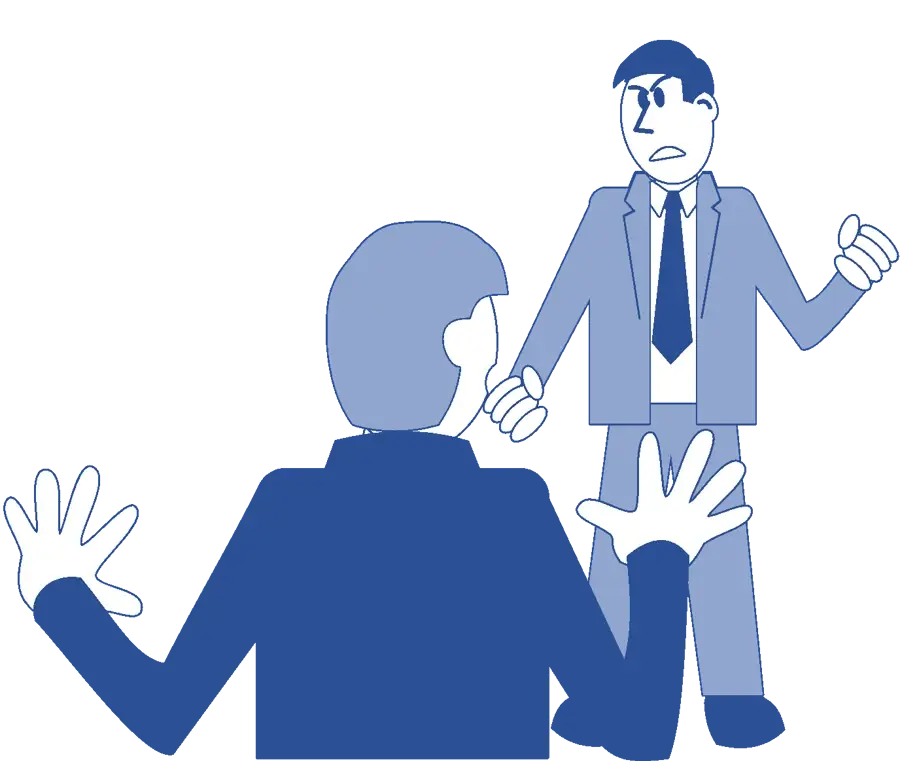Workplace bullying can occur in any environment and may include:
Repeated criticism or humiliation
Setting unrealistic deadlines
Deliberate isolation or exclusion
Spreading gossip or rumours
Physical intimidation or threats
These behaviours often take place in front of others or via digital channels like email or social media. It can be subtle or overt and may be carried out by peers, managers, or even subordinates.
What is harassment?
Harassment is defined under the Equality Act 2010 as any unwanted conduct related to a protected characteristic that violates someone’s dignity or creates an intimidating, hostile, degrading, or offensive environment.
Protected characteristics include:
Harassment is unlawful in the UK, and employers have a legal duty to take reasonable steps to prevent it. Harassment can involve direct discrimination, physical assault, verbal abuse, or inappropriate "banter."
What is the difference between bullying and harassment?
The main difference is legal status:
Both are workplace issues that can be raised through a formal complaint or dealt with through informal approaches like mediation.
What is sexual harassment?
Sexual harassment is a type of harassment involving unwanted behaviour of a sexual nature. It includes:
Verbal comments or sexual advances
Inappropriate touching or physical assault
Sharing sexually explicit content
Staring or unwanted looks
Invasive questions about someone's private life
Sexual harassment is illegal. Victims may file a harassment claim, raise the issue with HR, or consult an employment law specialist for advice.
What are the effects of bullying and harassment?
The effects can be far-reaching, leading to:
Increased use of sick leave
Low morale and disengagement
Poor mental health
Legal claims such as constructive dismissal
Breaches of employment law or even breach of contract
Employers who fail to address these behaviours risk damaging their reputation and breaching their legal position.
What does the law say?
Is harassment unlawful?
Yes. The Equality Act 2010 makes harassment related to protected characteristics illegal across England, Scotland, Wales, and Northern Ireland. This includes harassment by colleagues, supervisors, or third parties such as clients or customers.
Is bullying against the law?
Not directly. There is no standalone bullying and harassment law in the UK. However, employees are still protected under:
The Employment Rights Act 1996 which, among other things, protects employees from experiencing detriment under certain circumstances.
The Protection from Harassment Act 1997, which is designed to protect people from any form of persistent conduct that causes them distress.
The Health and Safety at Work etc. Act 1974, which requires employers to protect its staff from any risks to their health and safety.
The Human Rights Act 1998, which protects people from experiencing behaviour that infringes on their human rights.
The duty of care that employers have for their employees under common law, which requires employers to protect their employees from suffering any unreasonable harm or loss while at work.
What should an employer do?
Employers must take all reasonable steps to prevent and address bullying and harassment. This includes:
Having a clear harassment policy
Providing access to a support service
Offering training on types of harassment
Following a fair procedure for complaints
Encouraging reporting to a line manager, HR, or an independent third party
They should also be aware of recent developments like the Worker Protection (Amendment of Equality Act) Act, which introduces greater obligations for employers to prevent workplace harassment.
What should an employee do?
If you're facing bullying or harassment:
Keep a record of the behaviour (dates, times, witnesses).
Try an informal approach where appropriate — speak to the person or ask your line manager.
Follow your employer’s complaint process.
Contact the Acas helpline or a solicitor for legal advice.
Consider conciliation or mediation.
If the behaviour continues or the employer fails to act, it may lead to a legal claim or employment tribunal.
How does HR and policy help prevent bullying?
A proactive HR department and clear anti-harassment policy are essential. Good policies should:
Define bullying and harassment
Outline reporting and investigation steps
Ensure confidentiality
Encourage employees to raise concerns early
Promote a respectful culture
Resources such as Acas guidance, CIPD, or the Human Rights Commission (EHRC) offer additional support and standards.
When does bullying become a legal issue?
Workplace bullying can become a legal issue when it:
Leads to mental health problems
Causes someone to resign (resulting in a constructive dismissal claim)
Involves physical violence
Breaches duties under health and safety or employment law
Even where bullying doesn’t meet the threshold of illegality, employers still have a legal duty to provide a safe working environment.
Final thoughts
Understanding the difference between bullying and harassment in the workplace helps both employers and employees create safer, more respectful environments. While the law clearly defines and prohibits harassment, bullying should be treated just as seriously.
Stay informed, take action early, and promote a culture of respect. Employers must lead by example and employees should feel empowered to speak up.




